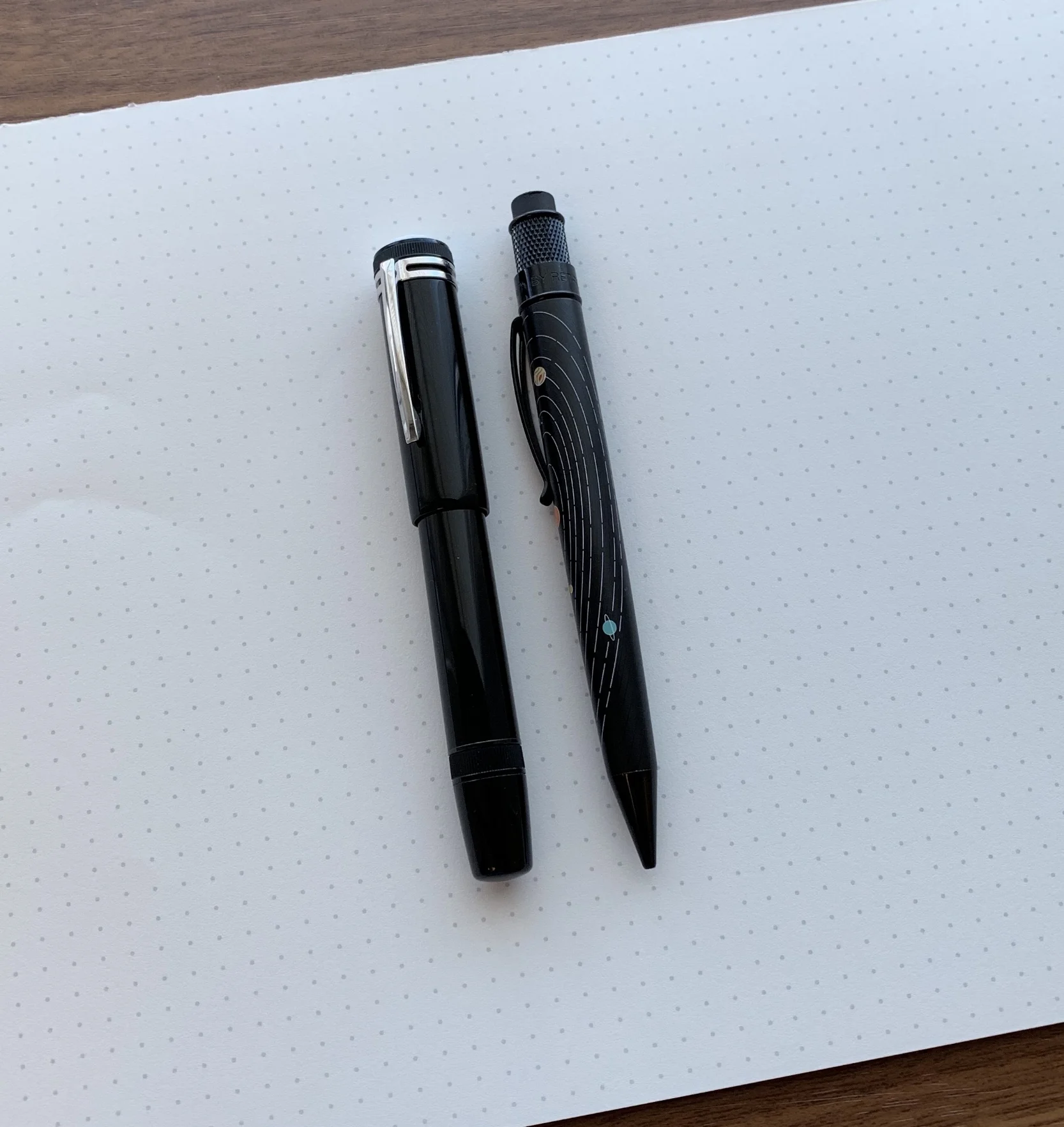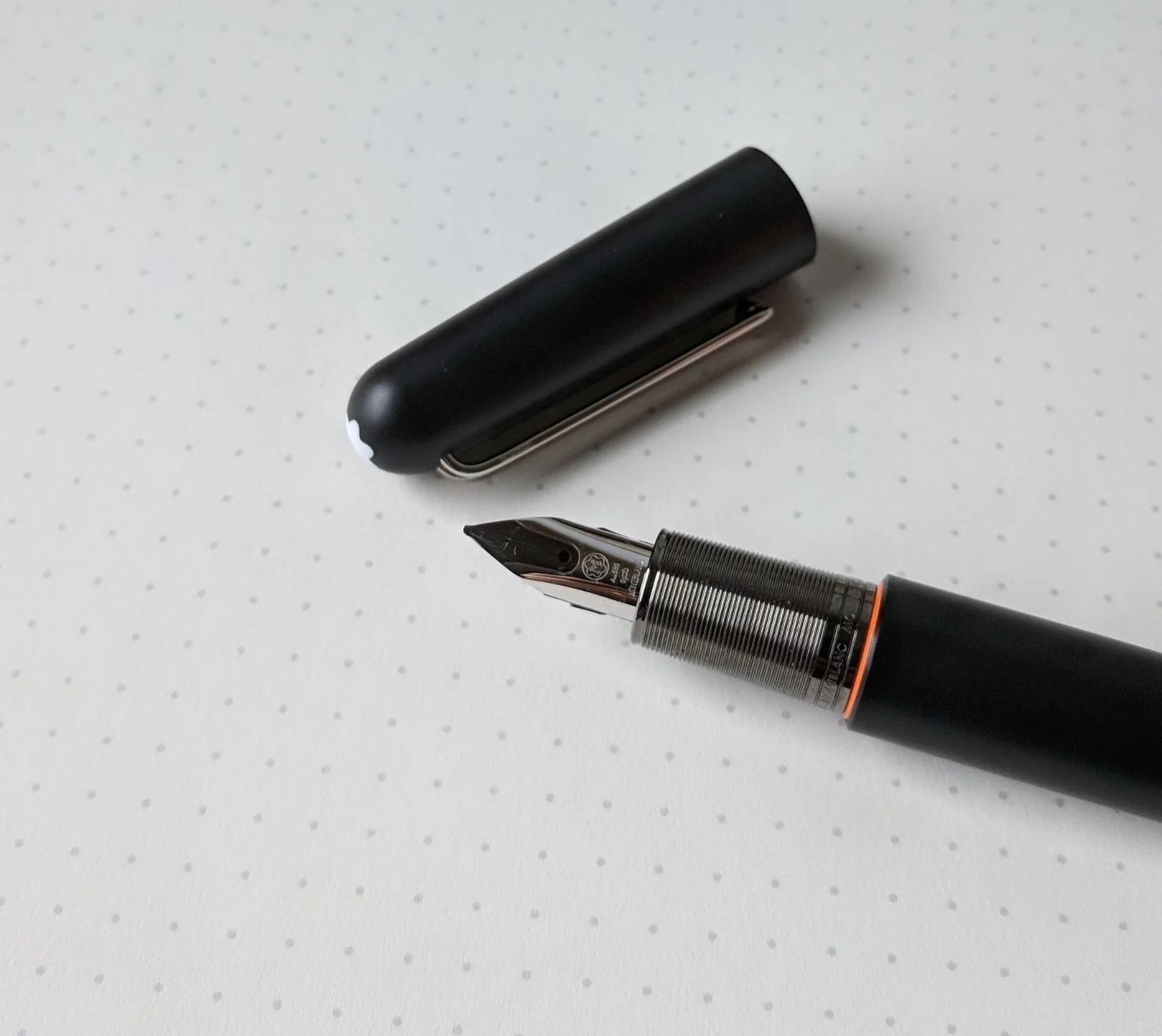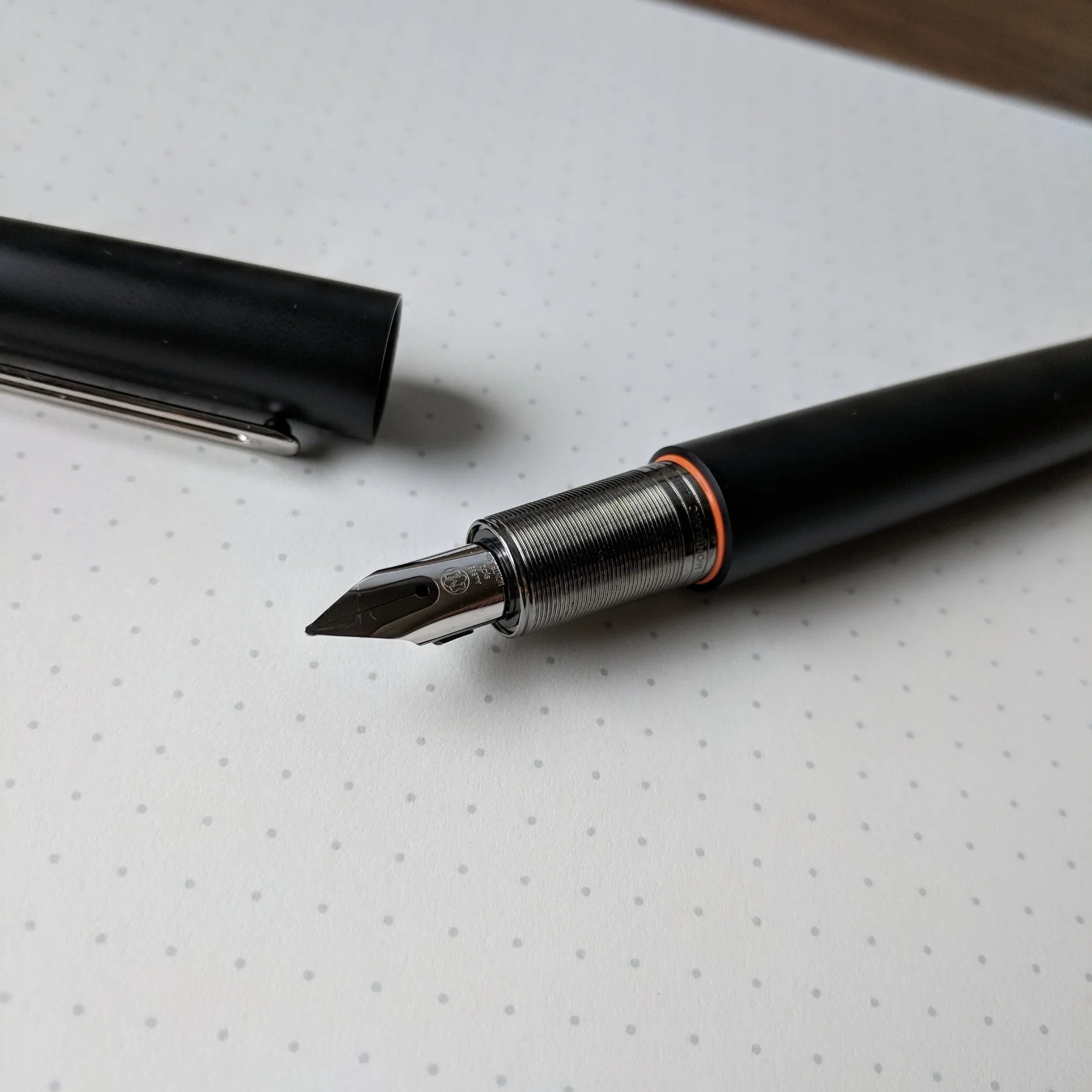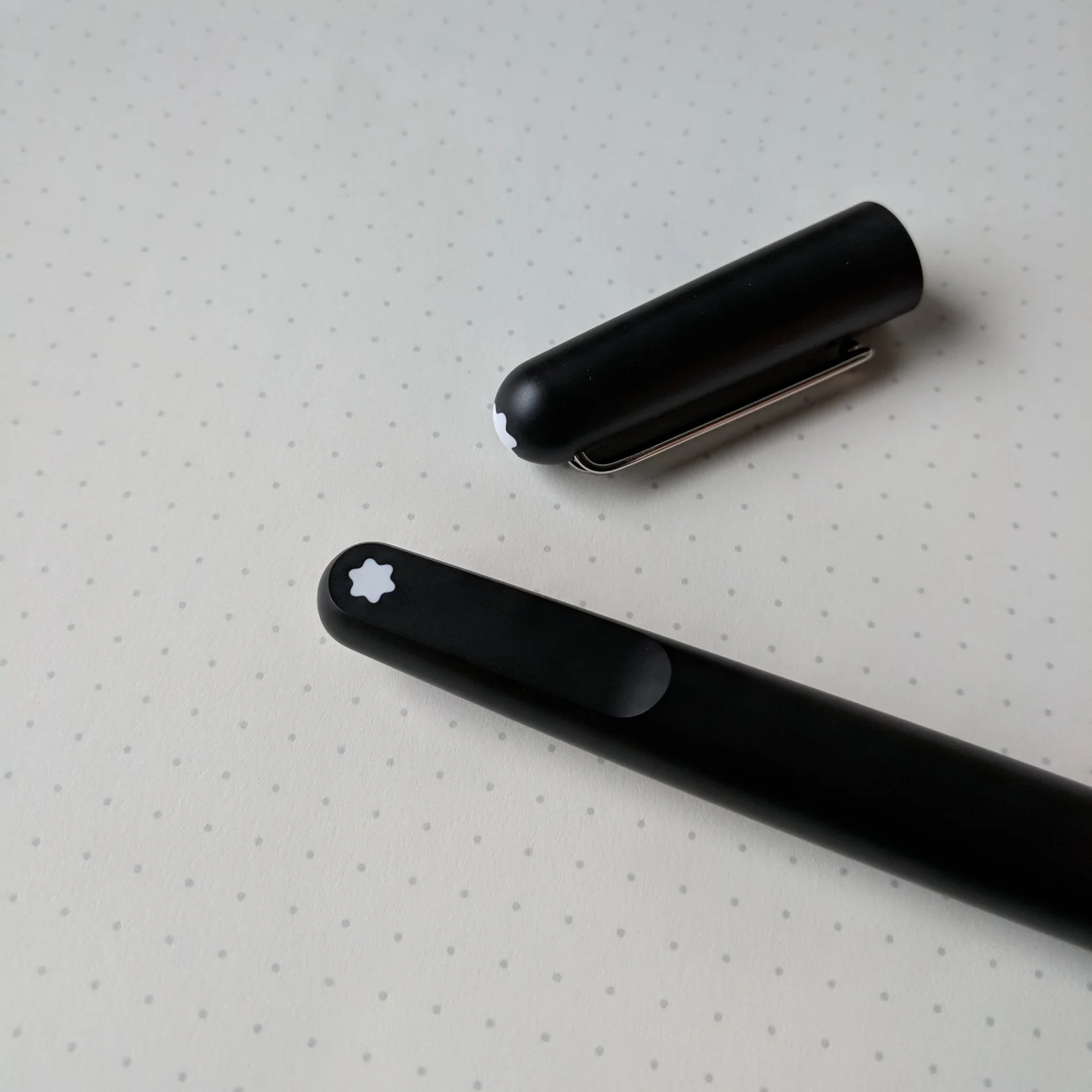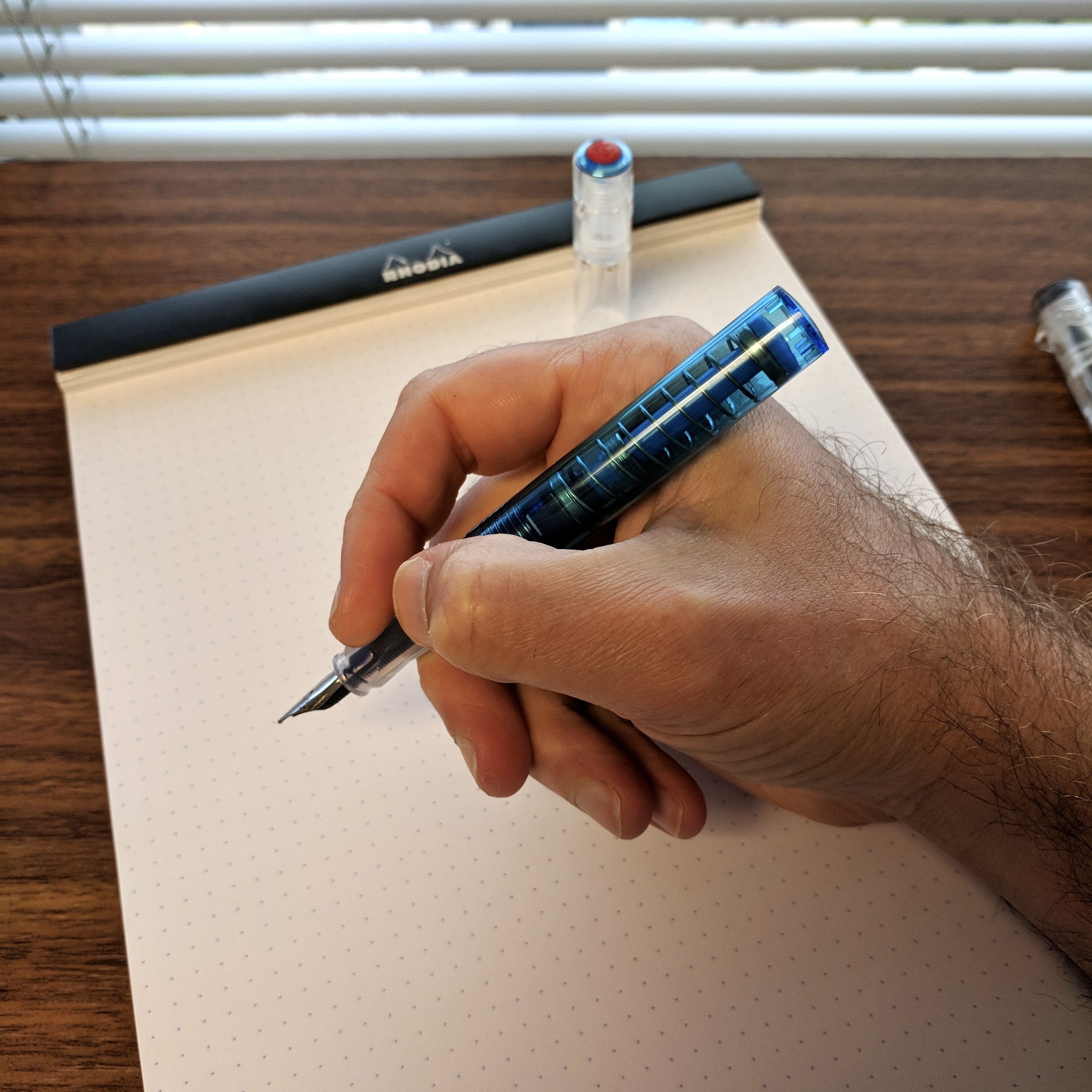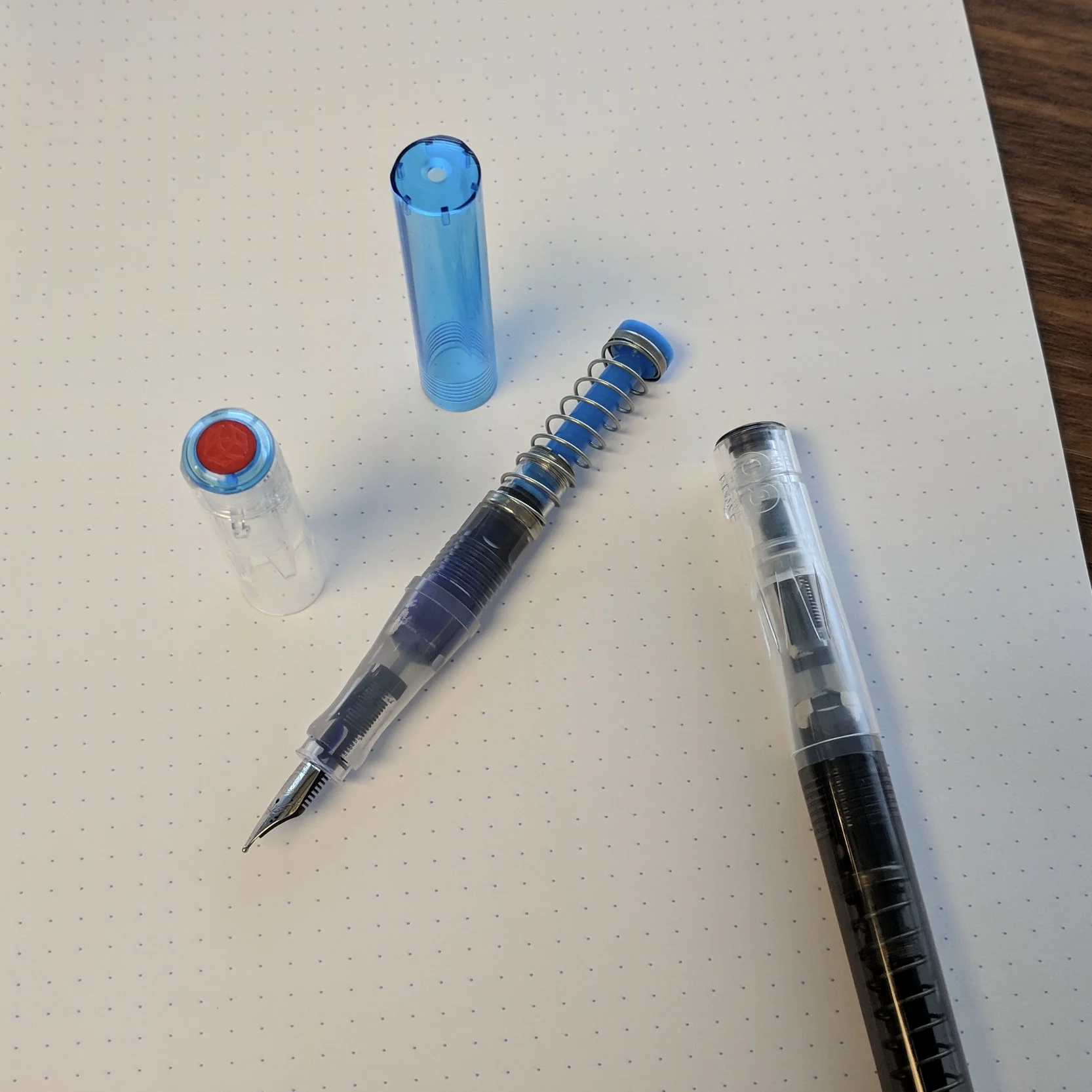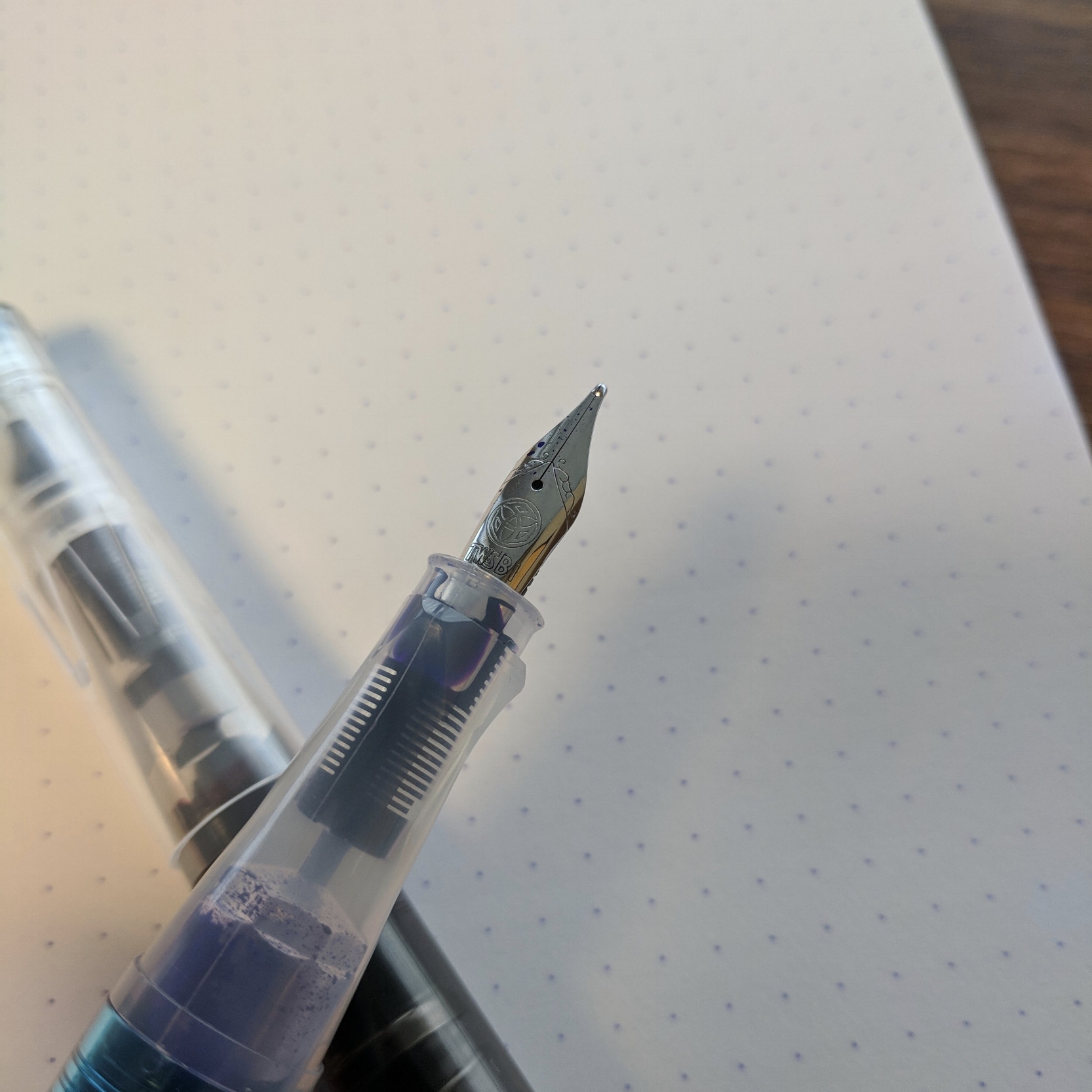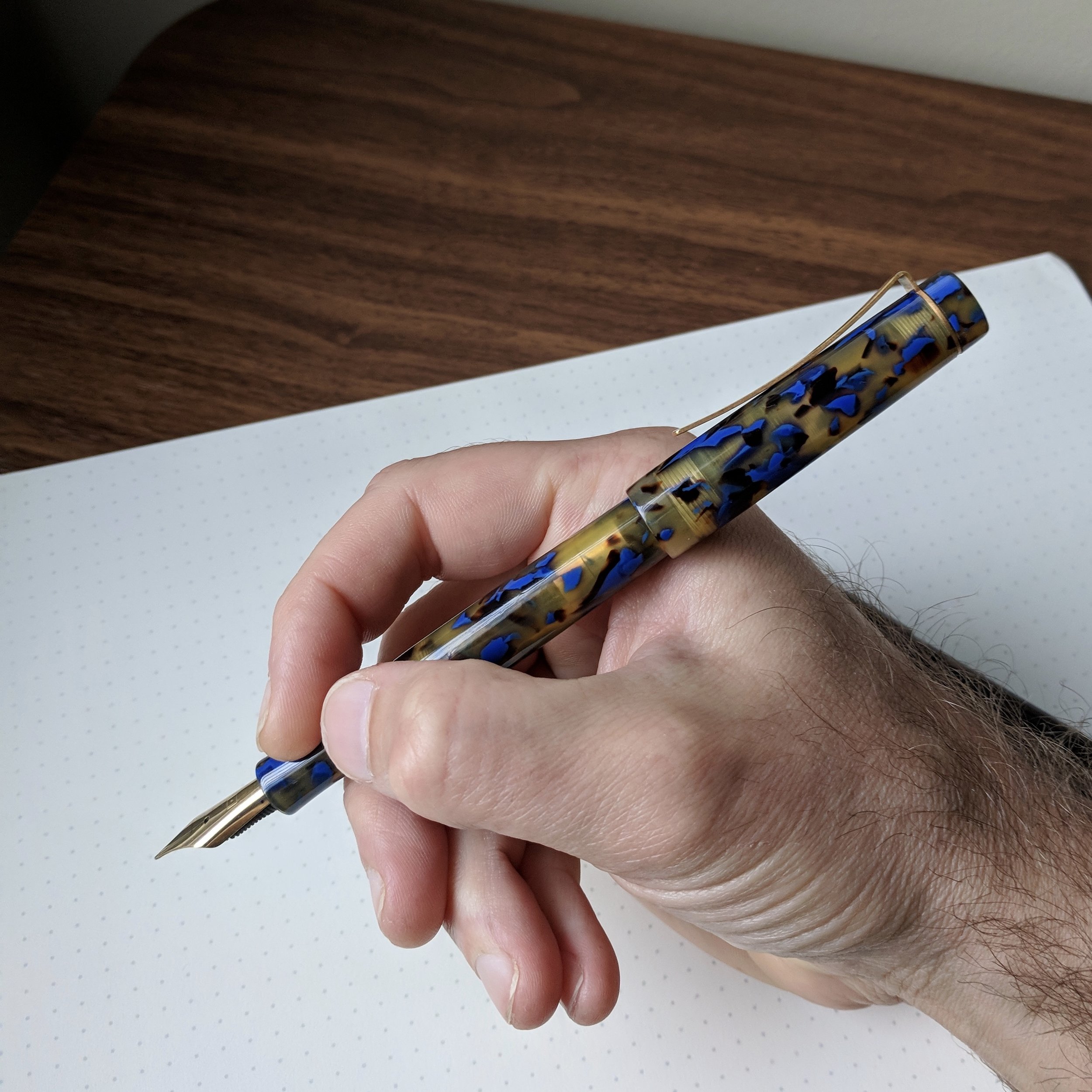The Montblanc Heritage 1912 falls squarely within the “niche pen” category that certainly won’t appeal to everyone, but offers a glimpse of what storied, experienced brands like Montblanc are capable of when they reach into their back catalog for inspiration. I’ve had mine for a couple years now, and while it was an expensive purchase that required me to liquidate a significant chunk of my pen collection to be able to buy it, I’ve enjoyed every minute of owning and using this pen.
The Heritage 1912 is compact, which makes it a fun pen to carry for work, though you do have to mind where you set the cap because the pen doesn’t post.
This pen’s full name is the “Heritage Collection 1912 Fountain Pen,” which for simplicity’s sake I’ll refer to as the “Heritage 1912.” If you’re familiar with fountain pen history, and especially vintage Montblancs, you’ll notice the resemblance to the Simplo “Safety Filler” from the early 20th century. The key innovations of safety fillers like the Simplo included retractable nib mechanisms and a screw-on cap, both of which made early hard-rubber eyedropper pens less likely to leak. This pen, of course, is resin, not hard rubber, and it’s not a true “safety filler” eyedropper pen but rather a piston-filler that features a retractable nib.
The Heritage 1912 with the nib extended, and…
With the nib retracted.
The filling system on this pen is one of the more unique in my collection - it’s a piston filler where the piston knob has been modified to control both the filling system itself and the retractable nib mechanism. (Pictures and descriptions are included below.) Concerned that you might accidentally cap the pen with the nib extended? Worry not, because Montblanc designed a failsafe in the cap that keeps you from screwing the cap on in a manner that damages the nib. There’s a thin metal rod mounted in the end of the cap that blocks the cap from closing and bending the nib tines.
In its standard position, the piston knob rotates to extend/retract the nib.
Once the nib is extended, you pull out on the piston knob to engage the filling mechanism, which works like a regular piston filler. Once you fill the pen, you push the knob back in.
Don’t get me wrong, I own far more functional fountain pens than the Heritage 1912, which has its drawbacks as an everyday writer. For starters, the pen doesn’t post. Also, a smaller ink capacity limits your ability to use the Heritage 1912 with broader nibs: the pen holds less than 1 ml of ink, which I worked around by having Mike Masuyama grind my fine nib to a .4mm cursive italic. If you can overlook these two issues, however, the Heritage 1912 is a superb writer. The resin body has exceptional balance, with the filling system/mechanism lending this smaller pen some weight. The 14k, rhodium-plated nib has quite a bit of spring/bounce (NOT flex) to it, and I’d consider it one of the best Montblanc nibs I’ve ever used.
The design element that drew me to this pen was how Montblanc treated the Snowcap. Montblanc describes its emblem as “encased in transparent resin and coated in mother-of-pearl lacquer.”
A size comparison shot of the Montblanc Heritage 1912 against my recently acquired - and sharp looking - Retro 51 “The System” pencil from Mike Dudek of the Clicky Post!
Takeaways and Where to Buy
I count myself an unabashed fan of Montblanc, especially when they branch out of their standard comfort zone of pens based on the Classique/146/149 templates and do something unique like the Heritage 1912. There’s nothing else like this pen in my collection, and if I ever had to narrow my pens to a handful, this one would easily make the cut. I would wholeheartedly recommend this pen to any Montblanc enthusiast or those who’d like to experience the feel of a vintage safety filler but want a pen that they can use everyday without worrying about damaging a valuable antique.
The Heritage 1912 can be somewhat challenging to find, but it is part of Montblanc’s standard lineup and not a special or limited edition. Site sponsor Appelboom currently has the pen available for around $850 USD (depending on the exchange rate), which certainly isn’t inexpensive but also doesn’t approach Montblanc’s premium pricing on its Writer’s Editions and other limited offerings. (If you really want to blow it out, you could spring for the much larger Heritage 1914, which retails in the many thousands of dollars/euros. I’ve never seen one in person, and presume they were made in much smaller quantities.) Other Montblanc retailers who stock the Heritage 1912 include La Couronne du Compte and Fountain Pen Hospital.
Disclaimer: I purchased the pen featured in this review with my own funds, for my own collection. This post does contain affiliate links.
